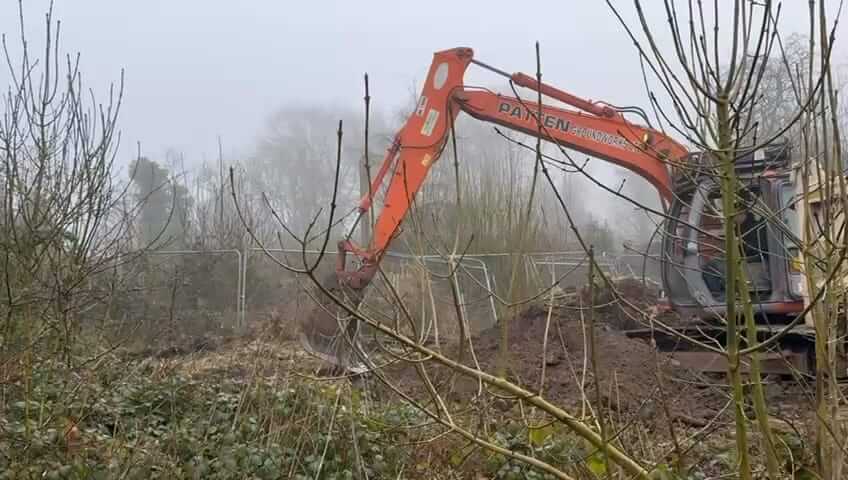STEPS FOR MANAGEING JAPANES KNOTWEED ON CONSTRUCTION SITES
Identification
Proper identification is crucial, as other weeds can often be mistaken for Japanese Knotweed on construction sites. Misidentification can lead to unnecessary delays, costly treatments, or failure to address the real issue. Accurately identifying Japanese Knotweed early ensures the correct treatment plan is implemented. Therefore it is essential to book a survey, as identification by a qualified professional is crucial. Early detection prevents structural damage and legal complications for developers.
Pause Works
If Japanese Knotweed on construction sites is suspected, immediate action is essential to prevent its spread. All site activities must be halted, and clear signage and fencing should be installed to mark the affected area and warn of its presence. Essentially, the project will be on hold until the situation is assessed. Containment is crucial to prevent the spread of knotweed through clothing, equipment, or vehicles. Taking swift action helps minimize risks, ensuring compliance and preventing further complications with your development project.
Excavation
The most common method for managing Japanese Knotweed on construction sites is excavation. Excavation involves meticulously digging up the extensive root system. Proper planning is essential to ensure complete eradication, as even a small piece of root left behind can regenerate into a new plant. Excavation should only be carried out by a licensed professional with the necessary expertise and equipment to prevent regrowth and further infestation.


